Culture
Life or Tradition? The Problem With How We Responded to the Sumo Controversy
Published
6 years agoon
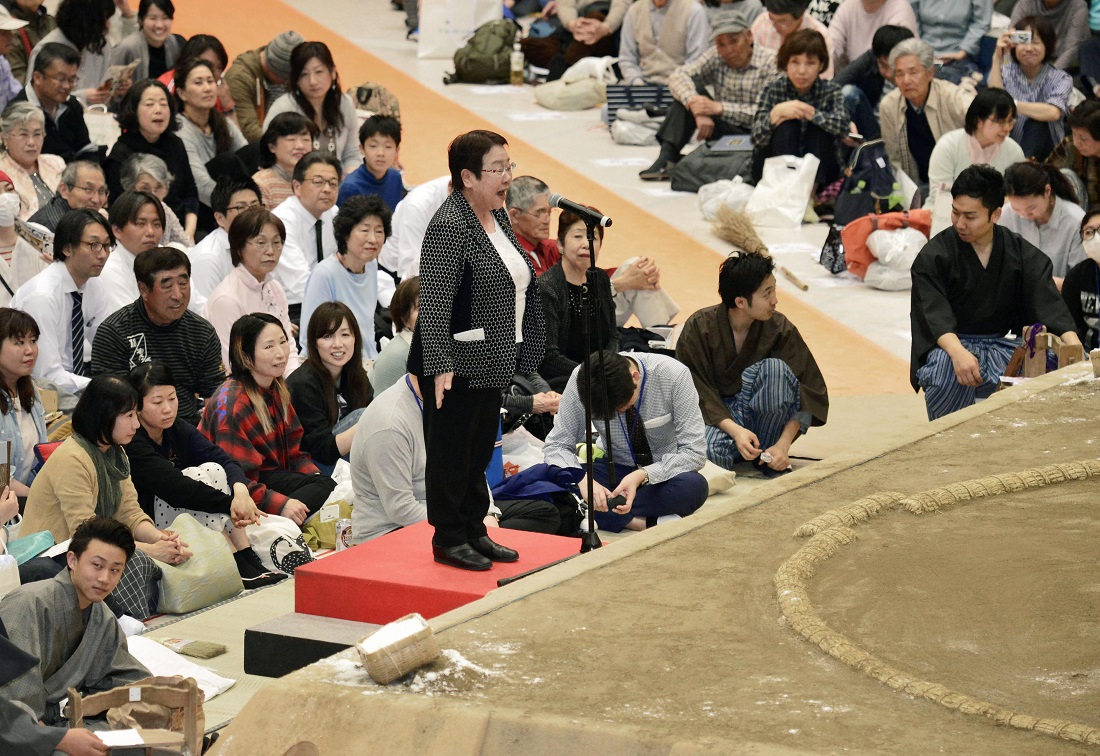
A recent episode, where at least two women climbed up into the sumo wrestling ring—known as the dohyo in Japanese—and were asked to leave caused quite a stir in Japan and overseas.
During the April 4 spring exhibition match in the city of Maizuru, Kyoto prefecture, the women were offering lifesaving measures after the mayor suffered a stroke while delivering a speech on the dohyo.
The women were immediately ordered to leave the ring over the public address system because the ancient sport traditionally barred women from stepping inside the dohyo.
The ban on women entering the ring, however, does not date back so long ago—the practice reportedly started after the 1868 Meiji Restoration. In any event, it is a tradition that has been upheld for one and a half centuries, a considerably long period of time.
There are various theories as to why women are forbidden from entering the dohyo. Among them, the most persuasive says that if a woman climbs up into the ring—the place where sumo bouts take place as offerings to the mother goddess or the goddess of harvest—the goddess becomes offended and jealous.
As far as the incident in Maizuru is concerned, though, the goddess is likely not to have turned a frowning eye on the women at all, instead smilingly saying, “You did it!”
To sum up, it was nothing but a young referee, who was handling the PA system, getting upset with the women and responding inappropriately. To be fair, the referee’s act was likely a result of inculcation with the sumo culture’s doctrinaire interpretation of the long-standing ban on women, instead of being educated properly regarding what the tradition really meant.
The Japan Sumo Association is the organizing body for sumo wrestling. If it wants to keep the tradition intact, it must buckle down and require all its members—including, of course, the association’s chairman, Nobuyoshi Hakkaku—to study and honor sumo traditions anew.
The association would be well-advised to include among its invitees to the study sessions members such as Takanohana, a maverick stable master who recently, in an apparent bid to challenge the association leadership, cited the “essence of sumo” to make a point.
How Foreign Media Reported It
Overseas media have been particularly abrasive in connection with the April 4 incident, gleefully engaging in “Japan bashing” and buzzing about the latest incident on the dohyo, linking it with the cause of feminism and assertions of gender inequality in Japan.
The New York Times, for instance, carried a story headlined “Women Barred From Sumo Ring, Even to Save a Man’s Life” in its April 5 edition. The article said: “In a country that consistently ranks low among developed countries on gender equality in health, education, the economy and politics, the episode was seen as a metaphor for how women are regarded in Japan.”
An article by The Washington Post appeared the same day under the headline “A Japanese woman tried to save a man’s life in the sumo ring, but was ordered away for being ‘unclean.’” The Post article argued, “It is the latest case to clearly illustrate the challenges that women face in achieving equality in Japan.”
This writer cannot help but feel baffled by their perspective. Such stories lack substance while being laced with malicious intent toward Japan, betraying the media’s arrogance with regard to their own publishing standards and their ignorance of Japan. Given that such news stories certainly affect the views of people around the world toward Japan, however, it is vital for us never to be off our guard in monitoring such publications.
Encouraged at least to some extent by this line of reporting, domestic voices have now begun calling for the end of the practice of prohibiting women from the sumo ring.
When a sumo exhibition match was held in the city of Takarazuka, Hyogo prefecture, on April 6, the city’s female mayor requested permission to deliver her speech from inside the ring, as do her male colleagues throughout Japan. She was turned down by the Japan Sumo Association. Instead, she spoke beside the ring, standing on a podium set up temporarily just for her.
“I am frustrated and feel bitter that I cannot give this speech on the dohyo just because I am a woman, despite the fact that I am the current mayor of Takarazuka,” she told the audience.
Hearing her remarks, this writer thought, “Wow, just a moment—but would it matter so much?”
The female mayor went on to stress: “I understand we should think much of tradition, but the times have been changing so fast, and the number of female prefecture governors and female mayors has been increasing. There is also the possibility of a woman taking the post of prime minister. Even if there is such a development, should women continue to be absolutely barred from entering the ring?”
After considering her words, I thought to myself: “What are you talking about? When a female prime minister emerges, there will be no problem only if there is no male chief Cabinet secretary, and if the chief Cabinet secretary is also female, then a male deputy prime minister can make the speech on the dohyo on behalf of the prime minister. That’s it!”
Arrogance of Modern People
First of all, as long as the Sumo Association is so eager to maintain this Meiji-era tradition, the public should acknowledge the association’s desires as a form of wisdom and leave it as is. Quibbling over something traditional on the basis of needing a simplistically “rational” way of seeing the world represents nothing better than arrogance of modern people.
It brings to mind the words of the novelist Haruki Murakami, written when touring the area near a Greek Orthodox monastery in the Mt. Athos peninsula of northeastern Greece about 30 years ago.
“If I am allowed to express my personal opinion, I’d like to say it would be a good thing that there’s a single place in the world that women are forbidden to step into. If there is a place that men are banned from entering, I’d not get offended about that particularly.” (Uten Enten, a collection of Murakami’s essays published in paperback by Shincho Bunko)
Murakami’s message, which calls for acknowledging the diversity of life, is now established worldwide as a buzzword. If his idea is applied, the existence of a place where women are banned from entering, and a place that men cannot be allowed in, should legitimately be recognized—at least in my opinion. Now that we live in an age where people generally can go anywhere they want, it should be affirmed and accepted that there are also places of proscription, from which some are absolutely forbidden from gaining entrance.
Japanese Way of Thinking
The latest sumo ring uproar conjures up a kind of good-bad dichotomy: which should be deemed more precious, human life or tradition?
In my view, the answer is definitely the former. It brings to mind the irresistible memory of the 1977 hijacking incident of a JAL flight at Dhaka Airport, Bangladesh. The Japanese Red Army, the perpetrators of the hijacking, demanded the Japanese government release the extremist group’s members serving prison terms or under detention, threatening to “kill hostages one by one” if the event of government rejected their demands. Capitulating to the intimidation, Prime Minister Takeo Fukuda at that time made his decision based on what was called “extralegal measures,” giving the nod to payment of a ransom and release of the terrorist group members held in Japan. In explaining his decision, Prime Minister Fukuda referred to the view that, “Human life is weightier than the earth.”
Without a doubt, the controversy out of the April 4 sumo incident can be seen as an extension of the “Human life is weightier than the earth” theory. The human life-first rhetoric, however naive it may be, is immune from lethal criticism. Any rhetoric seen running contrary to its thesis, on the other hand, is at risk of facing a relentless barrage of social criticism.
The response to the incident also reflects the state of Japan’s society after World War II. The idea of people standing on tradition under the guise of placing priority on human life is one of the gravest of problems in this society. The thinking process seems to come to a complete halt—far from attaining sufficient depth to make a good judgment—at the mere mention of the phrase.
Alarmingly, the way Japanese think has become increasingly superficial. The fuss about the sumo ring was resolved this time, too, in an embarrassingly shallow and stereotypic manner. The preciousness of human life is, as a matter of course, indisputable. This writer has not the least intention of denying it.
The philosopher Michel Montaigne, in his later years when he had tasted the sweet and bitter things in life, criticized a trend toward disregard for human life with words that can be rendered into English as follows: “The most dreadful of all our illnesses is the propensity to be neglectful of the values of our existence.” (“Of Experience,” Book 3, Chapter 13 of The Essays, from a translation by Hideo Sekine, published by Kokushokankokai Inc., and titled Montaigne Zuisoroku)
This is a lesson by Montaigne: that if we wish to live a good life, we should never be neglectful of our own life. This should be the whole premise for the way we live.
“Although human life is all-important, tradition should also be highly esteemed. In the history of community, the possibility of protecting tradition, ultimately without sacrificing the value of human life, should always be kept in mind.”
In the end, I find myself wondering why Japanese society can’t respond to the sumo issue in a more thoughtful, less peremptory way, to avoid making ourselves look stupid.
Satoshi Kuwahara, senior writer at the Culture News Department of The Sankei Shimbun.
*Quotes from Montaigne are according to The Essays of Michel Eyquem de Montaigne.
(Click here to read the original article in Japanese.)
You may like
-


OBITUARY | Akebono, a Former Sumo Grand Champion, Dies at 54
-


Wrestlers at Scandal-Hit Miyagino Stable Transferring to Isegahama Stable
-


Takerufuji is the First Makuuchi Division Debutant Winner in 110 Years
-


Up-and-Comers Takerufuji and Onosato Take Charge at Spring Basho
-


Yokozuna Terunofuji Upset on Opening Day of Spring Basho
-


Heading into the Spring Basho, Terunofuji Has His Eye on the Prize


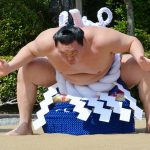

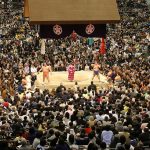

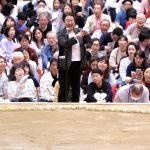
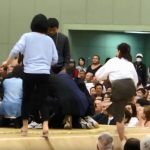


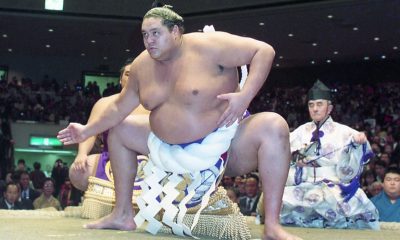

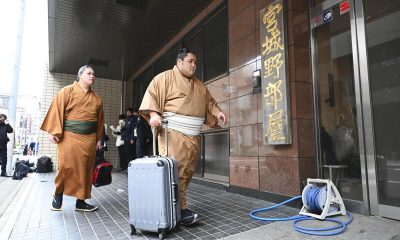

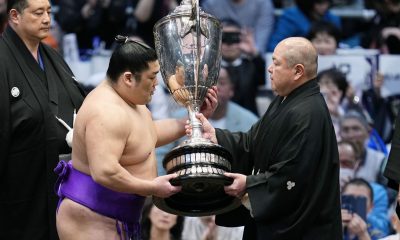



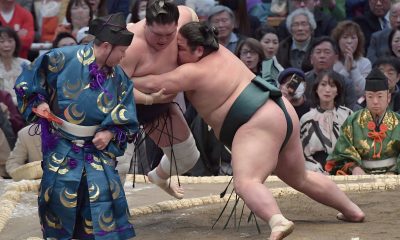

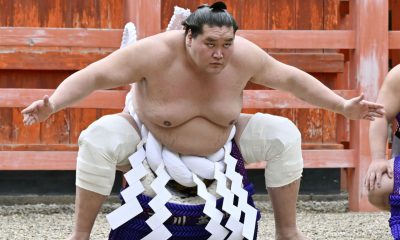



You must be logged in to post a comment Login